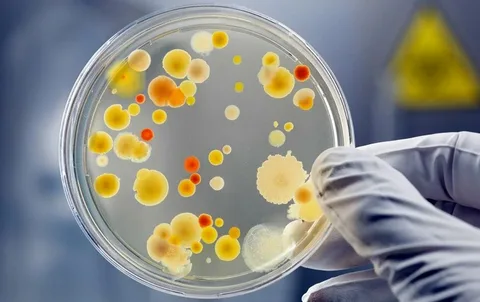In this article, we will explore staphylococcus aureus food sources, shedding light on its implications and ways to mitigate the risks.
According to ScienceDirect, staphylococcus Aureus is one of the most important human pathogens.
Not only does it cause infections in the skin and respiratory tract, but it also causes food poisoning due to its superantigen production.
Staphylococcus aureus is a type of bacteria that causes many infections in humans. It can be found in a variety of food sources.
Knowing these sources is important for preventing foodborne illnesses and protecting public health.
Staphylococcus Aureus Food Sources
Below are staphylococcus aureus food sources:
1. Dairy Products
Dairy products, such as milk and cheese, as well as other processed dairy products, have been identified as carriers of the bacterium Staphylococcus aureus.
The bacteria can be spread by contaminated milk from infected animals, or by improper handling during processing.
Furthermore, contaminated equipment and inadequate storage conditions can also contribute to the proliferation and spread of staphylococcus aureus.
2. Meat and Poultry
Meat that has not been cooked properly, particularly poultry, carries a high risk of being contaminated with Staphylococcus aureus.
The bacteria may be present at the time of slaughter, during processing, or packaging. Poor handling of raw and cooked food can also increase the risk of cross-contamination.
To reduce the transmission of Staphylococcus aureus, it is important to cook meat and poultry at the correct temperature and practice good hygiene.
3. Prepared Foods and Deli Meats
It is important to ensure the proper storage and handling of pre-packaged foods, such as salads, sandwiches, deli meats, and other ready-to-eat items, to prevent the spread of Staphylococcus aureus bacteria.
Poor hygiene, such as inadequate handwashing, can lead to contamination. Therefore, it is important to store and handle these items appropriately.
4. Bakery Products
Bakery products such as cream-filled pastries, custard, and cream-based desserts are breeding grounds for the bacteria.
The bacteria can spread through the use of contaminated ingredients or through poor food handling practices.
Proper storage temperatures and proper hygiene during the preparation process reduce the risk of contamination.
5. Salads and Fresh Produce
Fresh produce, especially leafy green vegetables, and unprocessed vegetables, can carry the risk of staphylococcus aureus when it comes into contact with dirty surfaces, contaminated water, or contaminated soil.
Poor washing techniques and poor storage conditions can encourage bacterial growth.
Washing and disinfecting produce before consumption can help minimize the risk of staphylococcus aureus.
A Word From GetMe Treated
To promote food safety, it is important to be aware of the presence of staphylococcus aureus and its effects on various food sources.
When you are aware of the potential risks of staphylococcus aureus in your dairy products, in meat and poultry products, in prepared foods, in bakery products, or in fresh produce, you can take preventative steps.
Maintaining good hygiene practices, adhering to good manufacturing practices, and ensuring the correct storage conditions are all important steps in reducing the spread of Staphylococcus aureus in food sources protecting public health, and reducing foodborne illnesses related to this bacterium.
FAQs Related To Staphylococcus Aureus Food Sources
Where is Staphylococcus mostly found?
It normally found on the skin or in the nose
Where is the most common place to get staph?
These microorganisms live benignly on a variety of skin surfaces, particularly around the nostrils, mouth, genitalia, and anus.
Who is most likely to get a staph infection?
Staph infections can affect anyone, but some people are more likely to get them than others, including those with chronic conditions like diabetes, cancer, and vascular disease, as well as those with eczema and lung disease, and those who inject drugs.
What soap kills Staphylococcus?
According to research published on NCBI, daily bathing with chlorine-based soap and the prevention of STM transmission and infection
Can Apple cider vinegar cure Staphylococcus?
Apple cider vinegar has a ton of anti-microbial properties, so it’s great for fighting off germs like E.coli, Candida, and Staphylococcus.
What vitamins are good for staph infection?
Vitamin B3
How do you know when staph is in your blood?
Bacteremia is an infection caused by the presence of staph bacteria in the blood. Symptoms of Bacteremia include fever and high blood pressure.
Other Helpful Blog Posts:
- Nimba Zucchini Plant Leaves Health Benefits
- How To Change Unhealthy Eating Habits
- What Are The Health Benefits Of Pawpaw Seed
- Why Is Oatmeal Not A Healthy Breakfast?
- The Unknown Health Benefits Of Playing Sports
- 10 Things Your Hands Say About Your Health
- 12 Food Combinations That Are Bad For Your Health

